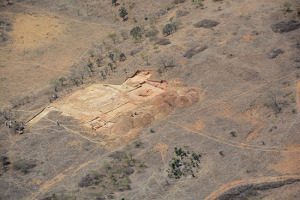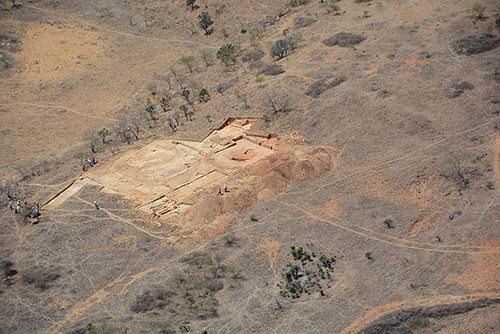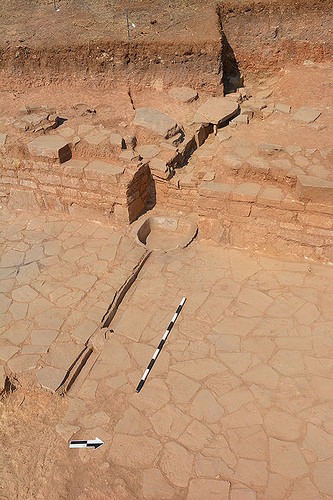
Researchers report* an ancient royal palace complex in Mexico. The emergence of early state societies is a major focus of anthropological studies, and a key characteristic of state societies is the royal palace, the ruler’s residence and seat of government. Elsa Redmond and Charles Spencer report on the well-preserved remains of a royal palace at the archaeological site of El Palenque in the Valley of Oaxaca, Mexico. Excavation data from the site indicate that the palace complex was built according to a preconceived design in a single large-scale construction effort and exhibits architectural and organizational features similar to later, historically documented royal palaces in Mesoamerica. Covering a maximum estimated area of 2,790 m2, the palace exhibits a ground plan differentiated into governmental and residential components, reflecting a centralized, hierarchical, and specialized state administration. Analysis of ceramic samples and radiocarbon dating of charcoal samples from the site suggest that the El Palenque palace complex was in use during 300-100 BC, a time of archaic state emergence in the region. The authors suggest that the palace complex at El Palenque represents the oldest multifunctional palace in Mexico’s Valley of Oaxaca, and provides evidence of early state society in the region.
____________________________________
El Palenque royal palace. Image courtesy Elsa M. Redmond and Charles Spencer
____________________________________
Water shrine, where a stone-lined drain descending from ruler’s residence supplied rainwater to cistern. Image courtesy Elsa M. Redmond and Charles Spencer
________________________________________________
Article Source: A PNAS press release.
____________________________________
*“Ancient palace complex (300–100 BC) discovered in the Valley of Oaxaca, Mexico,” by Elsa M. Redmond and Charles Spencer.
________________________________________________
Subscribe to Popular Archaeology Premium. Available on all laptops and mobile devices, and still the industry’s best value at only $9.00 annually.
___________________________________________
Travel and learn with Far Horizons.
____________________________________________
This richly illustrated issue includes the following stories: Recent findings shedding new light on the whereabouts of the remains of Philip of Macedon, father of Alexander the Great; how an archaeologist-sculptor is bringing bones of the dead back to life; archaeologists uncovering town life at the dawn of civilization; an exclusive interview with internationally acclaimed archaeologist James M. Adovasio about what makes the Meadowcroft Rockshelter prominent in the ongoing search for the first Americans; what archaeologists are finding at the site of the ancient city of Gath, the home town of the biblical Philistine giant, Goliath; and how scientists are redrawing the picture of human evolution in Europe. Find it on Amazon.com.






